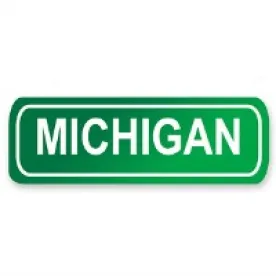Highlights
- One of Michigan Gov. Whitmer’s newest executive orders begins to open up two northern Michigan regions
- The other executive order incorporates prior restrictions on businesses and expands those requirements and safety protocols
- Businesses in other regions of the state, must remain closed, unless previously permitted to operate
On May 18, Michigan Gov. Gretchen Whitmer signed two executive orders, Executive Order 2020-91 and Executive Order 2020-92, that pivot to a regional approach to the governor’s stay at home regime and replace the “Stay Home, Stay Safe” Executive Order 2020-77 issued on May 1.
The orders also incorporate Executive Order 2020-90 allowing research laboratories to resume activities, and now certain businesses to begin reopening.
Importantly, EO 2020-92 allows in two northern Michigan regions social gatherings of up to 10 people and permits retail stores and offices to reopen with restrictions and restaurants and bars to reopen with limited seating. EO 2020-91 incorporates all of the restrictions placed on businesses allowed to open and expands or modifies certain of those restrictions.
Executive Order 2020-92 Opens Two Northern Michigan Regions
Besides the allowance for certain businesses to operate under Executive Order 2020-77 (subject to restrictions now appearing in EO 2020-91), EO 2020-92, the other May 18 order, now permits businesses that employ workers in the following categories (referred to as “resumed activities”) to perform in-person operations, beginning May 22:
- Workers necessary to perform retail services for Region 6, including Manistee, Wexford, Missaukee, Roscommon, Benzie, Grand Traverse, Kalkaska, Crawford, Leelanau, Antrim, Otsego, Montmorency, Alpena, Charlevoix, Cheboygan, Presque Isle, and Emmet counties and for Region 8, including Gogebic, Ontonagon, Houghton, Keweenaw, Iron, Baraga, Dickinson, Marquette, Menominee, Delta, Alger, Schoolcraft, Luce, Mackinac, and Chippewa counties
- Workers in Regions 6 and 8 who work in an office setting, but only to the extent that such work is not capable of being performed remotely
- Workers in Regions 6 and 8 who work in restaurants and bars
- Workers in Regions 6 and 8 necessary to prepare a workplace to follow the workplace standards described in EO 2020-91
Businesses in other regions of the state, unless previously permitted under EO 2020-77, must remain closed.
Executive Order 2020-91 Adds Restrictions on Businesses and Establishes Record Keeping Requirements
All businesses allowed to operate under EO 2020-92 must follow the minimum requirements provided in EO 2020-91. Any failure to abide by the rules will constitute a failure to provide a workplace that is free from recognized hazards within the meaning of the Michigan Occupational Safety and Health Act.
At the end of EO 2020-91, the Gov. Whitmer states that the rules “…have the force and effect of regulations adopted by the [States] departments and agencies…” and indicates that “[a]ny challenges to penalties imposed by a department or agency” will have to proceed through the existing administrative review process. This language may be an attempt to limit other forms of challenges, considering that a number of lawsuits have been filed across the state seeking to challenge the governor’s orders.
Executive Order 2020-91 Also Expanded Requirements for All Reopened Businesses
Under EO 2020-91, in addition to the previous restrictions provided for in EO 2020-77, all businesses that are permitted to resume operations must:
- Prepare a COVID-19 preparedness and response plan and make it readily available to employees, labor unions, and customers, whether via website, internal network, or by hard copy, by June 1, 2020 (or within two weeks of resuming in-person activities)
- Designate one or more worksite supervisors to implement, monitor and report on the COVID-19 control strategies developed and to remain on-site at all times when employees are present, or that businesses designate someone to perform the required supervisory role. This was previously only required for the construction industry.
- Provide COVID-19 training to employees that covers workplace infection control practices, the proper use of personal protective equipment, steps the employee must take to notify the business or operation of any symptoms of COVID-19 or a suspected confirmed diagnosis, and how to report unsafe working conditions. This was previously only required for manufacturing operations.
- Conduct a daily entry self-screening protocol for all employees or contractors entering the workplace, including, at a minimum, a questionnaire covering symptoms and suspected or confirmed exposure to people with possible COVID- 19
- Now use ground markings, signs and physical barriers to keep people on the premises at least 6 feet from one another
- Continue and increase facility cleaning on high-touch surfaces (e.g. door handles) and parts, products, and shared equipment
- Make cleaning supplies available to employees upon entry and at the worksite and provide time for employees to wash hands frequently or to use hand sanitizer.
- Notify the local public health department and any coworkers, within 24 hours, when an employee is identified with a confirmed case of COVID-19
- Continue to abide by EO 2020-36 that prohibits discharging, disciplining, or otherwise retaliating against employees who stay home or who leave work when they are at particular risk of infecting others with COVID-19
- Establish a response plan for dealing with a confirmed infection in the workplace, including protocols for sending employees home and for temporary closures of all or part of the worksite to allow for deep cleaning.
- Restrict business related travel for employees to essential travel only
- Encourage employees to use personal protective equipment and hand sanitizer on public transportation
- Promote remote work to the fullest extent possible
- Adopt any additional infection control measures that are reasonable in light of the work performed at the worksite and the rate of infection in the surrounding community
Offices: Additional Restrictions
For those in the office setting located in Regions 6 and 8, operations may resume, but in addition to the general restrictions applicable to all businesses, offices must:
- Assign dedicated entry point(s) for all employees to reduce congestion at the main entrance
- Provide visual indicators of appropriate spacing for employees outside the building in case of congestion
- Take steps to reduce entry congestion and to ensure the effectiveness of screening (e.g., by staggering start times, adopting a rotational schedule in only half of employees are in the office at a particular time)
- Require face coverings in shared spaces, including during in-person meetings and in restrooms and hallways
- Increase distancing between employees by spreading out workspaces, staggering workspace usage, restricting nonessential common space (e.g., cafeterias), providing visual cues to guide movement and activity (e.g., restricting elevator capacity with markings, locking conference rooms)
- Turn off water fountains
- Prohibit social gatherings and meetings that do not allow for social distancing or that create unnecessary movement through the office
- Provide disinfecting supplies and require employees wipe down their work stations at least twice daily
- Post signs about the importance of personal hygiene
- Disinfect high-touch surfaces in offices (e.g., whiteboard markers, restrooms, handles) and minimize shared items when possible (e.g., pens, remotes, whiteboards)
- Institute cleaning and communications protocols when employees are sent home with symptoms
- Notify employees if the employer learns that an individual (including a customer, supplier, or visitor) with a confirmed case of COVID-19 has visited the office
- Suspend all nonessential visitors
- Restrict all nonessential travel, including in-person conference events
Research Laboratories: Additional Restrictions
Beyond the restrictions placed on all businesses, EO 2020-91 also places new restrictions on research laboratories. Such research facilities must abide by the following additional measures when performing business operations:
- Assign dedicated entry point(s) and/or times individuals are permitted into lab buildings
- Conduct a daily entry screening protocol for employees, contractors, suppliers, and any other individuals entering a worksite, including a questionnaire covering symptoms and suspected or confirmed exposure to people with possible COVID-19, together with, if possible, a temperature screening
- Create protocols and/or checklists as necessary to conform to the facility’s COVID-19 preparedness and response plan
- Suspend all nonessential in-person visitors (including visiting scholars and undergraduate students) until further notice
- Establish and implement a plan for distributing face coverings
- Limit the number of people per square feet of floor space permitted in a particular laboratory at one time
- Close open workspaces, cafeterias and conference rooms
- As necessary, use tape on the floor to demarcate socially distanced workspaces and to create one-way traffic flow
- Require all office and dry lab work to be conducted remotely
- Minimize the use of shared lab equipment and shared lab tools and create protocols for disinfecting lab equipment and lab tools
- Provide disinfecting supplies and require employees to wipe down their work stations at least twice daily
- Implement an audit and compliance procedure to ensure that cleaning criteria are followed
- Establish a clear reporting process for any symptomatic individual or any individual with a confirmed case of COVID-19, including the notification of lab leaders and the maintenance of a central log
- Clean and disinfect the work site when an employee is sent home with symptoms or with a confirmed case of COVID-19
- Send any potentially exposed co-workers home if there is a positive case in the facility
- Restrict all nonessential travel, including in-person conference events
Restaurant and Bars: Additional Restrictions
Although restaurants and bars in Regions 6 and 8 are allowed to resume operations, in addition to the general restrictions applicable to all businesses, there are other requirements that must be met before reopening. Specifically, restaurants and bars must:
- Limit capacity to 50 percent of normal seating
- Require 6 feet of separation between parties or groups at different tables or bar tops (e.g., spread tables out, use every other table, remove or put up chairs or barstools that are not in use)
- Create communications material for customers (e.g., signs, pamphlets) to inform them of changes to restaurant or bar practices and to explain the precautions that are being taken to prevent infection
- Close waiting areas and ask customers to wait in their cars for a call when their table is ready
- Close self-serve food or drink options, such as buffets, salad bars and drink stations
- Provide physical guides, such as tape on floors or sidewalks and signage on walls to ensure that customers remain at least 6 feet apart in any lines
- Post sign(s) at store entrance(s) informing customers not to enter if they are or have recently been sick
- Post sign(s) instructing customers to wear face coverings until they get to their table
- Require hosts and servers to wear face coverings in the dining area
- Require employees to wear face coverings and gloves in the kitchen area when handling food, consistent with guidelines from the Food and Drug Administration (FDA)
- Limit shared items for customers (e.g., condiments, menus) and clean high-contact areas after each customer (e.g., tables, chairs, menus, payment tools, condiments)
- Train employees on the appropriate use of personal protective equipment in conjunction with food safety guidelines, food safety health protocols (e.g., cleaning between customers, especially shared condiments) and how to manage symptomatic customers upon entry or in the restaurant
- Notify employees if the employer learns that an individual (including an employee, customer, or supplier) with a confirmed case of COVID-19 has visited the store
- Close restaurant immediately if an employee shows multiple symptoms of COVID-19 (fever, atypical shortness of breath, atypical cough) and perform a deep clean, consistent with guidance from the FDA and the Centers for Disease Control and Prevention
- Require a doctor’s written release to return to work if an employee has a confirmed case of COVID-19
- Install physical barriers, such as sneeze guards and partitions, at cash registers, bars, host stands, and other areas where maintaining physical distance of 6 feet is difficult
- To the maximum extent possible, limit the number of employees in shared spaces, including kitchens, break rooms, and offices, to maintain at least a 6-foot distance between employees
Retail Stores: Additional Restrictions
In addition to the restrictions previously contained in EO 2020-77, including occupancy requirements, and the general restrictions in EO 2020-91 applicable to all businesses, retail stores must now also:
- Create communications material for customers (e.g., signs or pamphlets) to inform them of changes to store practices and to explain the precautions the store is taking to prevent infection
- Post signs at store entrance(s) instructing customers of their legal obligation to wear a face covering when inside the store and not to enter if they are or have recently been sick
- Design spaces and store activities in a manner that encourages employees and customers to maintain 6 feet of distance from one another
- Install physical barriers at checkout or other service points that require interaction, including Plexiglas barriers, tape markers, or tables, as appropriate
- Establish an enhanced cleaning and sanitizing protocol for high-touch areas like restrooms, credit-card machines, keypads, counters, shopping carts, and other surfaces
- Train employees on appropriate cleaning procedures, including training for cashiers on cleaning between customers, and how to manage symptomatic customers upon entry or in the store
- Notify employees if the employer learns that an individual (including a customer or supplier) with a confirmed case of COVID-19 has visited the store
- Limit staffing to the minimum number necessary to operate
Revised Restrictions: Outdoor Businesses and Construction Industry
Gov. Whitmer’s restrictions on business traditionally performed outdoors largely remain unchanged, although new general restrictions from EO 2020-92 now apply to these businesses as well. These businesses must now require the use of personal protective equipment.
Specifically, businesses in the construction industry must require the use of work gloves to prevent contact with potentially contaminated services.
Revised Restrictions: Manufacturing Facilities
The specific conditions on manufacturing facilities largely remain unchanged from EO 2020-77. However, those facilities must now stagger meals and breaks, as well as start times at each entrance, where possible. Previously under EO 2020-77, this was a mandatory requirement.







 />i
/>i
